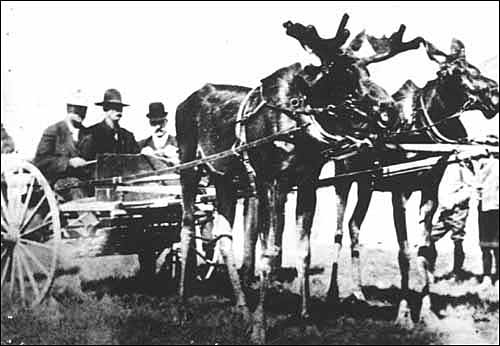Not much has changed in this lifeway for centuries, if not millennia. It's hard. Got reindeer?
https://www.youtube.com/watch?time_continue=2&v=T-YDuhXdHS4
https://www.youtube.com/watch?time_continue=2&v=T-YDuhXdHS4
Last edited by a moderator:


Colorado Clyde said:They managed to buy goods somewhere.....I see shovels, water/milk cans (stainless steel) lot's of cloth fabric, a chainsaw, dimensional lumber, wood screws, Rubber pack boots, cheap plastic kids toys, Metal buckets, wool blankets, army surplus anorak, etc...etc....
There must be a Home Depot nearby somewhere.... :haha:
Rifleman1776 said:Exactly. There has to be a lot of choice in that lifestyle.
Colorado Clyde Said:
They managed to buy goods somewhere.....I see shovels, water/milk cans (stainless steel) lot's of cloth fabric, a chainsaw, dimensional lumber, wood screws, Rubber pack boots, cheap plastic kids toys, Metal buckets, wool blankets, army surplus anorak, etc...etc....
There must be a Home Depot nearby somewhere....
Exactly. There has to be a lot of choice in that lifestyle.
How?
BillinOregon said:Not much has changed in this lifeway for centuries, if not millennia. It's hard. Got reindeer?
https://www.youtube.com/watch?time_continue=2&v=T-YDuhXdHS4[/quote]
It is interesting how many parallels to Plains Indian culture you can see in that video. Trade out the reindeer and sleds for horses and travois, and you would be hard pressed to tell the difference. The Siberian "tipis" in the video have more layers of hair-on hides to help insulate from the cold, but other than that they are the same tent. That is amazing given the distance, in whatever way you want to measure it, between the two cultures.
Supposedly the Plains Indians last influx from Siberia would have been over 10,000 years ago, which is a long time for a technology to remain stagnant, and stagnant on both continents in differing climatic conditions at that. I guess the very distance forces the question of whether the Ice Age travelers across Beringia brought tipi tech with them, or whether it was more recently developed independently in both places?
The Lodges were reported by the earliest Spaniards as being conical, and sound very much like just smaller tipis.
Loyalist Dave said:It's interesting to note that while the Siberians and the Finns have domesticated the reindeer..., they are also are available in North America, yet no domestication occurred by paleo-peoples.
LD

Colorado Clyde said:As a side-note, The Moose has also been semi-domesticated as a draft animal on both continents. The date of domestication is unknown, but it was done in in the 19th century.

They might have, if they would have had another 1000 years or so before European contact.
The act of migrating to north America slowed their development.
Enter your email address to join: